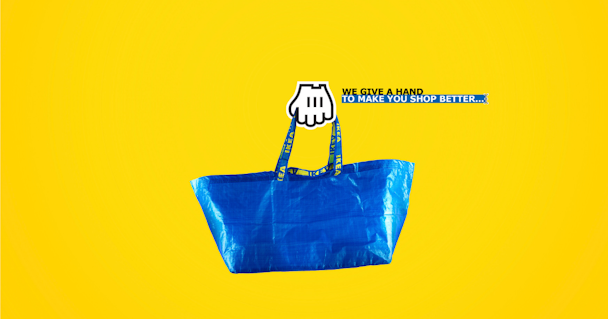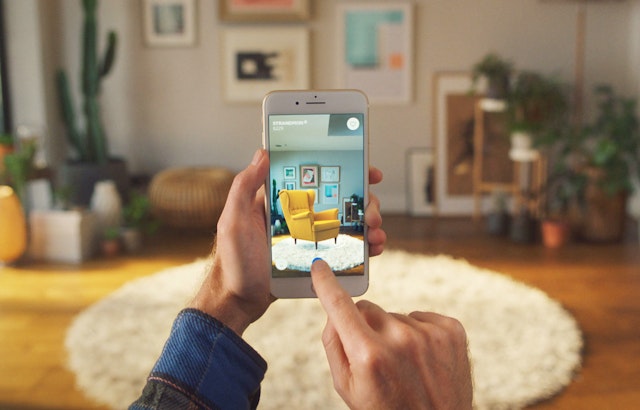
Advertisement

Barbara Martin Coppola was appointed as Ikea’s first chief digital officer in April 2018
To celebrate the Digital Transformation Festival, The Drum is revisiting some of the best writing we’ve published on marketing innovation. Here, Ikea’s chief digital officer Barbara Martin Coppola gives us an inside look at how the flat-pack retailer has assembled its new app strategy.
Ikea’s digital chief believes re-engineering the retailer's physical customer experience, as well as its online one, will help double its online sales within the space of a year.
Barbara Martin Coppola was appointed as Ikea’s first chief digital officer in April 2018, charged with transforming the business into a “multi-channel” brand that would better cater for people unable to visit its out-of-town stores.
Having come to the business from Grub Hub (where she was chief marketing officer) Martin Coppola also worked for Google on products such as YouTube, Chromecast, Google Express and the overall adoption of Google products in France. An engineer by trade, she also previously held positions at Texas Instruments in the US and Japan and for Samsung in South Korea.
Ikea, she tells The Drum, has been “a victim of its own success”.
“For 75 years we’ve been leading home furnishing globally and [sales] have been growing year over year in a continuous way,” the marketer-turned-digital boss says. While the brand’s stores (which have become a day trip destination in themselves) have been triumphing, the company admits its consumer experience needs tweaked so its outlets are “more conventionally located” and close to people in urban environments with no cars.
As a result, it’s “reinventing” all of its digital channels at large, as well as the services it provides, explains Martin Coppola.
Amid increasing competition from the likes of Amazon and a shift in shopping habits, the purveyor of flat-pack furniture has lagged behind tech-savvy rivals in terms of delivery and e-commerce in recent years.
Now, as part of a three-year strategy spearheaded by chief executive Jesper Brodin, it’s looking to turn its business model from one predicted around getting people through the doors of its big blue boxes to one that offers home delivery at affordable prices and has a brick-and-mortar presence in big cities.
Martin Coppola and her 5,000-strong digital team are the ones working behind the scenes to bring this vision to life. She says the unit she leads is “innovating and reinventing” every aspect of Ikea’s digital and physical worlds from engineering to data, marketing tools to in-store tech.

Ikea’s new augmented reality (AR) powered flagship shopping app, which has already been rolled out in France and the Netherlands, has a key role to play in advancing its digital transformation.
Martin Coppola says the app is performing “really well” in the two markets already, will be rolled out into three more unspecified ones in the “coming weeks”. It’s believed the UK – a key region for the retailer – will be among them.
Until recently, customers who didn’t pick up a copy of Ikea’s paper catalogue (which it spends 70% of its marketing budget on) were limited to browsing the store’s extensive catalogue through its Ikea Place app. Since 2017, Ikea Place has let people see how furniture would fit in their home before pushing them to buy in-store.
The updated effort, however, enables people to visualise the products in their space before letting them make in-app purchases.
With Ikea also planning to launch a host of smaller, more city-orientated spaces (like its Planning Studio in London’s Tottenham Court Road) the app also gives customers the opportunity standing in a store to view a fuller range of products For instance, if there is a particular chair or bookcase, a shopper likes, they could point their phone at it and see other textures and colours available.
Around 5% of Ikea’s €38bn global sales are currently online, this increases to 10% in the UK. And Martin Coppola hopes the global figure will “double” by the same time next year under her watch.
Despite its early success, Martin Coppola says the app “will never be finished” and will be constantly improved for customers.
For now too, there is little in the way of evidence to link AR with purchase intent. A 2016 study from retail marketing business Interactions found that 40% of people would pay more for a product if they could experience it through AR, while a further 72% said they had bought items they hadn’t planned to because of AR.
Anecdotally, Martin Coppola says that Ikea has seen that people its AR features are “influenced greatly” which converts into sales.
“With every algorithm and new functionality that we make, we see conversion growing,” she adds. “It’s all about asking, 'is this providing a good service to our customers?' And if it is, then you're getting it right for them.”
In-store staff, which account for a huge portion of Ikea's 175,000 employee pool, are also being brought along on the journey with tech training.
"It's really important that we train them to be at ease with digital because we believe in their talent and that they can thrive in the digital age," notes Martin Coppola .
"It's important to have a proactive approach to digitalisation so that we're not surprised one day that [some jobs] are not needed anymore. We can actually take people with us on the journey so that we all thrive at the end of the day.
"Ikea is a very human-centric business, and I love that."